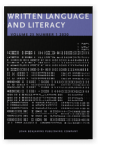Vol. 23:1 (2020) ► pp.1–28
“It’s written niisto but it sounds like knee stew.”
Handling multiple orthographies in Blackfoot language web resources
This paper argues for pragmatism rather than linguistic purity in orthography design for endangered Indigenous languages such as Blackfoot, emphasizing the need to see orthography standardization as a dynamic process rather than a static result. It explores the ongoing lack of community agreement about the best way to write the Blackfoot language and lack of widespread proficiency in the use of its standard orthography, and then describes ways in which this is mitigated in the Blackfoot Language Resources and Digital Dictionary project, a suite of web resources created to support language maintenance and revitalization work. The website uses a combination of relaxed searches, alternative spelling fields, and multimedia content to increase accessibility of the resources for users lacking proficiency in the standard orthography.
Article outline
- 1.Introduction
- 2.The Blackfoot language and Blackfoot writing
- 3.Characteristics of the standard orthography
- 3.1System-internal issues
- 3.2System-external issues
- 4.Solutions in the Blackfoot Language Resources and digital dictionary
- 4.1Relaxed search functions
- 4.1.1Pitch accent, geminates, glottal stops, spaces
- 4.1.2Letters not occurring in the standard Blackfoot orthography
- 4.1.3Digraphs
- 4.2Alternate spellings and pronunciation guides
- 4.3Multimedia files
- 4.1Relaxed search functions
- 5.Concluding thoughts
- Notes
-
References
